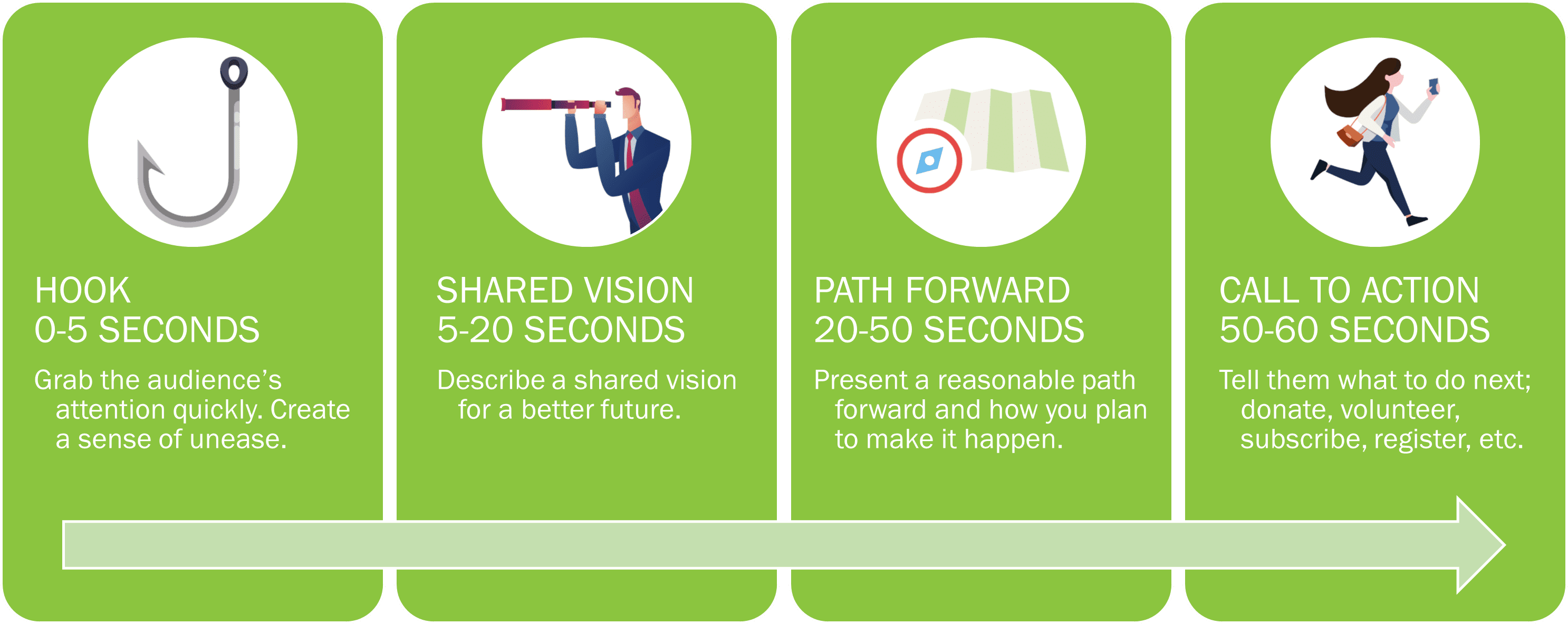Creating a compelling video is crucial to any political or activism campaign. But how do you do that? Is there some secret formula? Actually, there is. It’s the same messaging formula I use every day in my marketing business and teach throughout the Digital Activism course. It’s based on the Human Action Model. In this post, I’ll explain exactly how to adapt it to a one-minute video that can be used on social media and in digital ads.
“Tell me the facts and I’ll learn. Tell me the truth and I’ll believe. But tell me a story and it will live in my heart forever.”
Native American Proverb
I write quite a bit about storytelling and how important it is for content creation. In a one-minute video, you don’t have a lot of time to develop characters or present a hero’s journey. You need to capture attention and get straight to the point. Also, your goal isn’t simply to get people to watch the video. You want them to take action. For these reasons, there’s a very specific idea pattern that has been proven over and over to work.
But first, why one minute? There’s nothing particularly magical about one minute. But there are a couple of guidelines to know about. On the short end, 15 seconds is the limit for interstitial (non-skippable) ads on platforms like YouTube and Facebook. For our purposes, that’s too short. The other guideline is roughly two minutes. That’s a bit long for most advertisements and difficult to hold people’s attention for that long. One minute tends to be a good target but it’s not a hard limit so, for example, 62 seconds isn’t a problem.
The Hook (0-5 Seconds)
This is BY FAR the most important segment of your video. You have about 3-5 seconds to grab the viewer’s attention and convince them to watch the rest of the video. Don’t waste a single second of it by introducing yourself. Remember, nobody cares about you. You need to set the hook immediately by creating a sense of unease and making your case for change. This is where you focus on a pain point that you want to fix.
Spend the first 3-5 seconds of your video by presenting the pain point. It’s impossible to overstate how important these first few seconds are. Examples:
- “We’ve never spent more money on our schools yet proficiency scores have never been lower.”
- “Despite the lowest crime rate in a century, some people want to restrict your gun rights.”
- “Spending in the town of [blank] has increased 50% in ten years and they want to raise your taxes again.”
Shared Vision (5-20 Seconds)
Once you have presented the problem, you need to describe a shared vision for a better future. Simply pointing out how bad things are isn’t generally good enough. You need to show people what life would look like if that pain were gone. Think of this as a journey. The hook was “point A,” or the starting point. The shared vision is “point B,” or the destination.
This section should last until roughly the 20-second mark of the video.
Path Forward (20-50 Seconds)
Now you finally get to talk about yourself! The third step in the human action model is to present a reasonable path forward and describe how you plan to make that happen. Introduce yourself and provide the concrete steps and/or policies you will support in order to reach the shared vision. Don’t waste time here bragging or listing your qualifications unless you have some particularly relevant skills or experiences. They should be so obviously valuable that you don’t even need to explain why. If you need to explain, it’s too complicated and you should just leave it out.
This is the longest chunk of the video and runs approximately 30 seconds until the 50-second mark.
Call to Action (50-60 Seconds)
If someone has made it this far into your video, you’ve done a good job at articulating your vision. It probably means the viewer is receptive to joining the cause and it’s crucial to give them a place to direct that energy. How you decide to do that is up to you. You could ask them to donate, volunteer, subscribe, etc. But it should be a specific action that provides you with a concrete conversion event. For example, calls to action like “visit my website” or “learn more” are weak and non-specific. People are very unlikely to follow through and you’re even less likely to earn any benefits from them.
Conclusion
These are simply guidelines and the timeframes listed are not etched in stone. However, as mentioned, those first 3-5 seconds are crucial. Feel free to use this as a starting framework and adapt to your specific needs and personality. This progression has proven successful over decades of sales and marketing to be the most effective sequence for persuasion.

